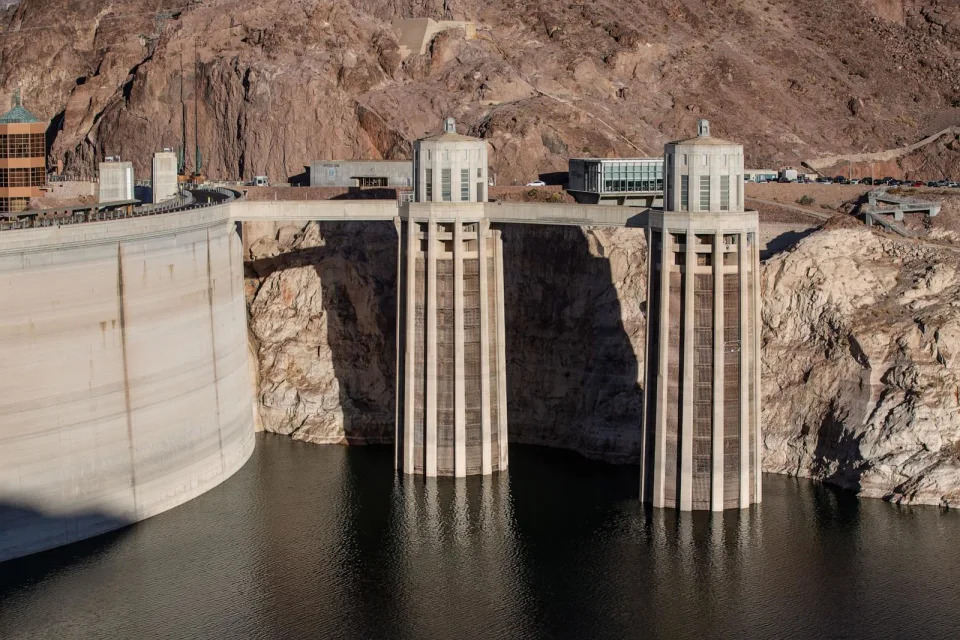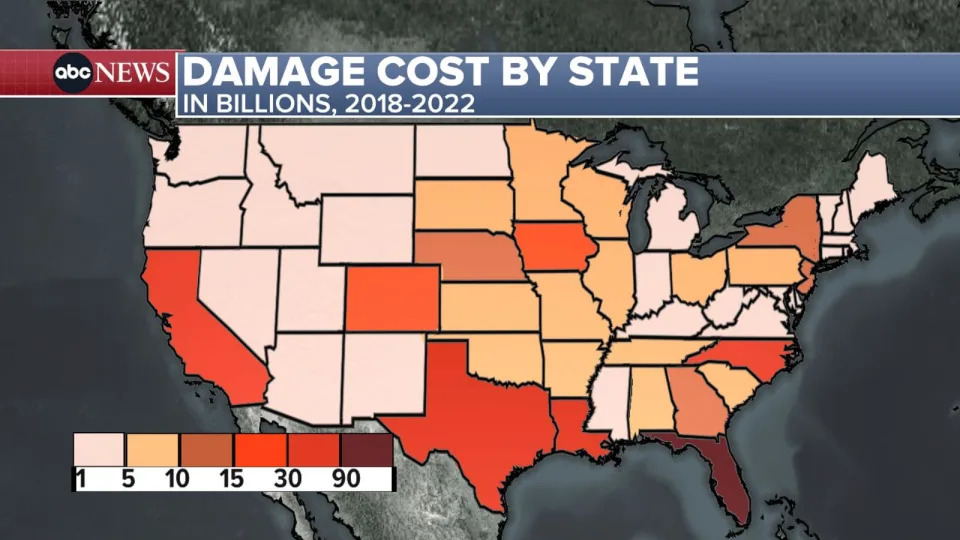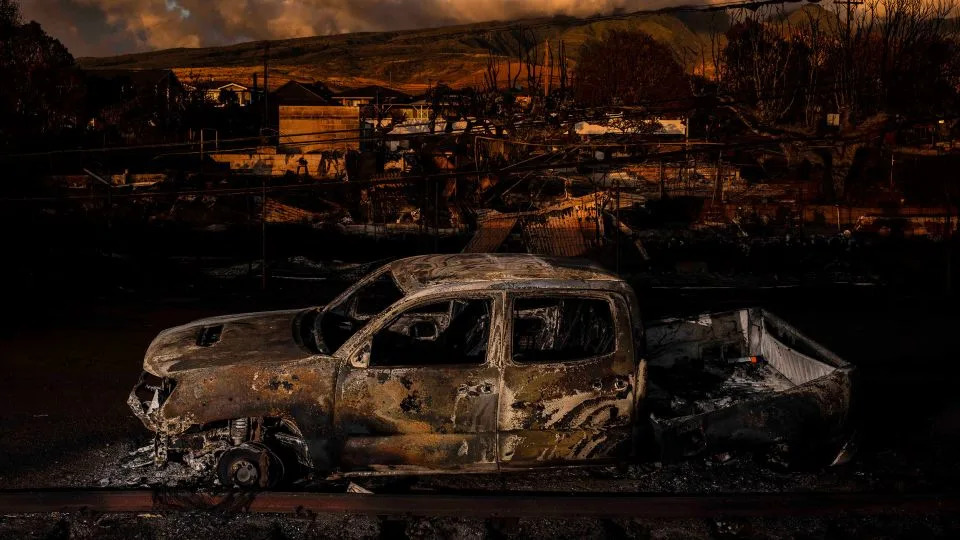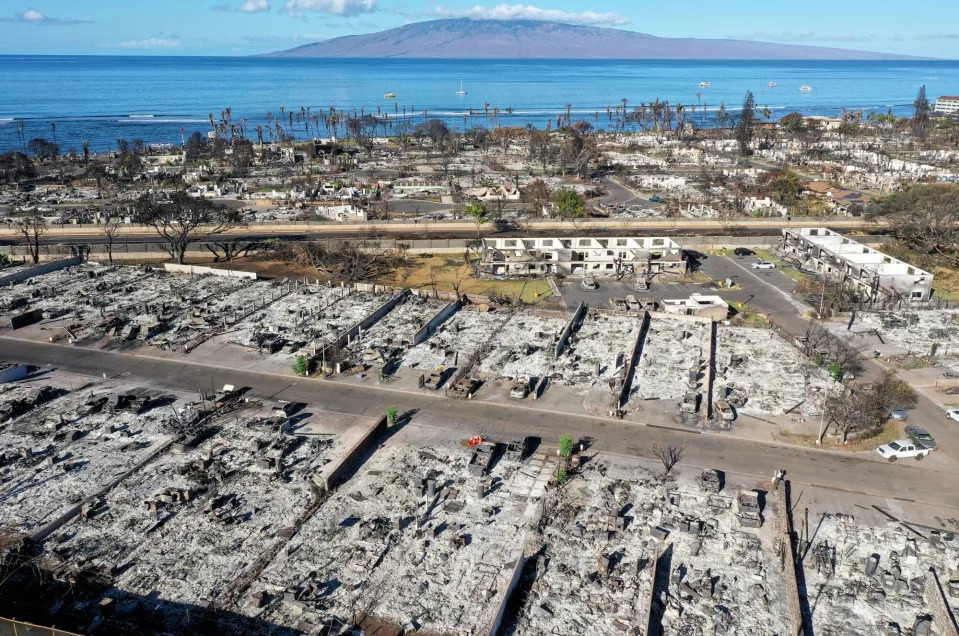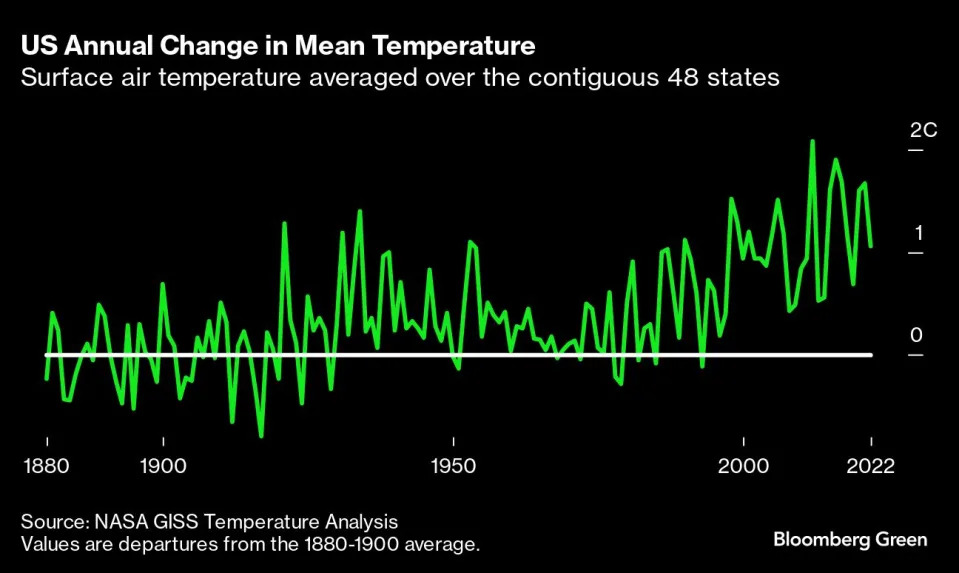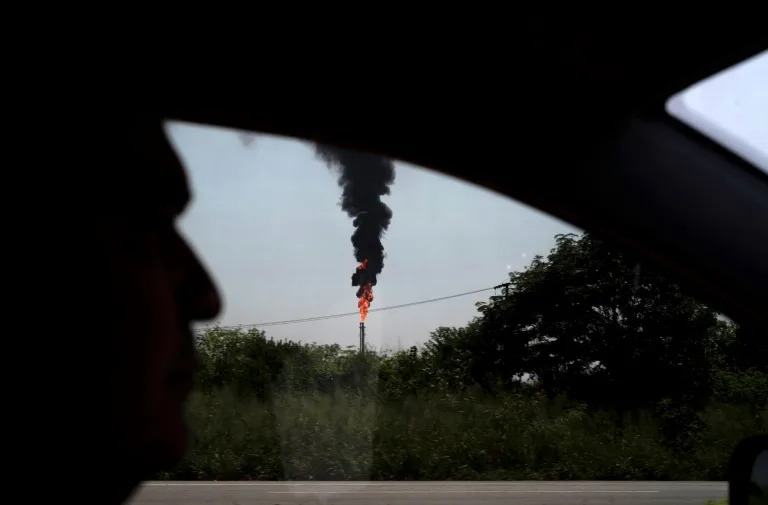Rachel Frazin
Tue, November 14, 2023

The Biden administration is rolling out billions of dollars aimed at making the country more resilient to the impacts of climate change and stressed on Tuesday that solutions are possible.
His comments and the funding come alongside the release of the Fifth National Climate Assessment — a federal climate report which found that the U.S. has not been decarbonizing fast enough to meet its climate goals or international ambitions.
“It lays out the threats and the dangers, but most experts would acknowledge that it also shows solutions are within reach,” Biden said of the report in a speech at the White House on Tuesday morning.
“It takes time for the investments we’re making to be fully materialized, but we just have to keep at it. We need to do more and move faster,” he added.
On Tuesday, the Biden administration also announced a total of about $6 billion from the Inflation Reduction Act and Bipartisan Infrastructure law that it says will help the nation stand up to some of the extreme weather impacts of climate change.
The Energy Department will be putting $3.9 billion into strengthening the electric grid to make it less vulnerable to extreme weather and natural disasters, in addition to increasing grid capacity and bolstering renewable energy.
The Environmental Protection Agency will be putting forward $2 billion in grants aimed at helping communities to deploy carbon-free energy and bolster their ability to respond to environmental issues, according to the White House.
The Interior Department will be putting $50 million toward water resource reliability and ecosystem health in Western states, and an additional $50 million toward funding for water conservation projects and hydropower upgrades.
Biden acknowledged the report, which says that the planet is likely to cross key warming thresholds that will have serious impacts on the U.S., also indicates that more action is needed to address the problem.
“This assessment shows us in clear scientific terms that climate change is impacting all regions, all sectors of the United States,” he said. “It warns that more action is still badly needed. We can’t be complacent.”
White House announces $6B in funding to strengthen climate resilience efforts
A.L. Lee
Tue, November 14, 2023

On Tuesday in Washington, President Joe Biden announced more than $6 billion in federal funds to strengthen U.S. climate resilience efforts. The investment aims to protect more than 21 million acres of public lands and waterways by reducing environmental pollution.
Nov. 14 (UPI) -- President Joe Biden announced more than $6 billion in federal funds to strengthen climate resilience efforts across the nation Tuesday, including a broad range of initiatives aimed at boosting infrastructure to withstand the impacts of climate change.
The investment aims to protect more than 21 million acres of public lands and waterways by reducing environmental pollution, which aligns with Biden's target goal of cutting carbon emissions in half by 2030, the White House said.
The funding announcement took place as Biden was on his way to attend the Asia-Pacific Economic Cooperation leaders' gathering in San Francisco, where he will deliver remarks on his administration's efforts to address the climate crisis.
In a statement, administration officials emphasized an escalating threat from climate change-related extreme weather events that have imposed an annual cost to the U.S. government of at least $150 billion, while underserved communities were being disproportionately affected.
The latest federal actions on climate come as the United States was facing a record number of climate disasters, with each one costing the nation more than $1 billion about every three weeks on average.

On Tuesday, President Joe Biden announced more than $6 billion in federal funds to strengthen U.S. climate resilience efforts. The funding announcement took place as Biden was on his way to attend the Asia-Pacific Economic Cooperation leaders' gathering in San Francisco, where he will deliver remarks on his administration's efforts to address the climate crisis. Photo by Chris Kleponis/UPIMore
Overall, the United States has sustained more than $2.6 trillion in estimated total costs due to hundreds of climate disasters over the past 40 years, according to data released by the National Oceanic and Atmospheric Administration in September.
In response to the crisis, the White House unveiled a wide range of policy moves to increase climate mitigation efforts nationwide, while Biden has allocated massive funding from several cabinet departments to carry out the mission.

On Tuesday in Washington, D.C., President Joe Biden announced more than $6 billion to strengthen U.S. climate protection efforts. The investment aims to protect more than 21 million acres of public lands and waterways by reducing environmental pollution.
The funds will immediately bolster climate resilience, with a particular focus on enhancing the nation's aging electrical grid, minimizing flood risk to communities, promoting conservation initiatives, while advancing environmental justice.
As part of the plan, the Energy Department will provide $3.9 billion from the Bipartisan Infrastructure Law to upgrade the U.S. power grid, following an injection of $30 billion from the administration in late October to modernize the grid against extreme weather.
The money will also be used to boost capacity for renewable energy, prevent wildfires from faulty infrastructure, deploy advanced technology to evaluate essential services, while prioritizing diversity, community engagement and workforce investment across the nation.
The Environmental Protection Agency is making $2 billion available through the Environmental and Climate Justice Community Change Grants program, which supports community-driven efforts on clean energy.
The EPA initiative encourages multi-year partnerships between various entities, with an extra $200 million set aside to offer practical help to strengthen the skills of workers in these communities to ensure the project's long-term success, the White House said.
The Interior Department will announce $100 million in funding for water infrastructure upgrades to improve drought resilience in western states, including $50 million in project awards to protect the region's natural resources.
Another $20 million will be announced for the Native Hawaiian community to navigate the effects of climate change, the White House said.
As part of the effort, the Defense Department is launching a new Climate Resilience Portal, which will serve as a one-stop shop for the public to access the latest in federal climate change data.
Also on the day, the Federal Emergency Management Agency will announce $300 million in a second round of funding through the Swift Current Initiative, which provides money and support to communities hit by flooding disasters over the past year.
Other announcements include $166 million to boost critical ecosystems and fund environmental planning for the National Park Service through the next decade, while building upon an initial investment of $44 million that seeks to restore and conserve 30% of lands throughout the country.
The administration is also partnering with the National Fish and Wildlife Foundation to announce more than $140 million in grants through the America the Beautiful Challenge, which will distribute the funds among 46 states, three U.S. territories and 21 Tribal Nations for various conservation projects.
All the latest funding is just a portion of more than $50 billion available in Biden's climate budget to address ongoing environmental concerns.
The White House also released the fifth National Climate Assessment which was produced by tracking and analyzing climate change impacts in every region of the country.
"The NCA is the most comprehensive federal effort to assess the state of climate science and communicate the impacts of climate change on people, communities, and ecosystems across the United States," the White House said.
The White House was also planning to publish summaries from more than a dozen roundtable discussions on climate resilience conducted by the administration earlier this year.







